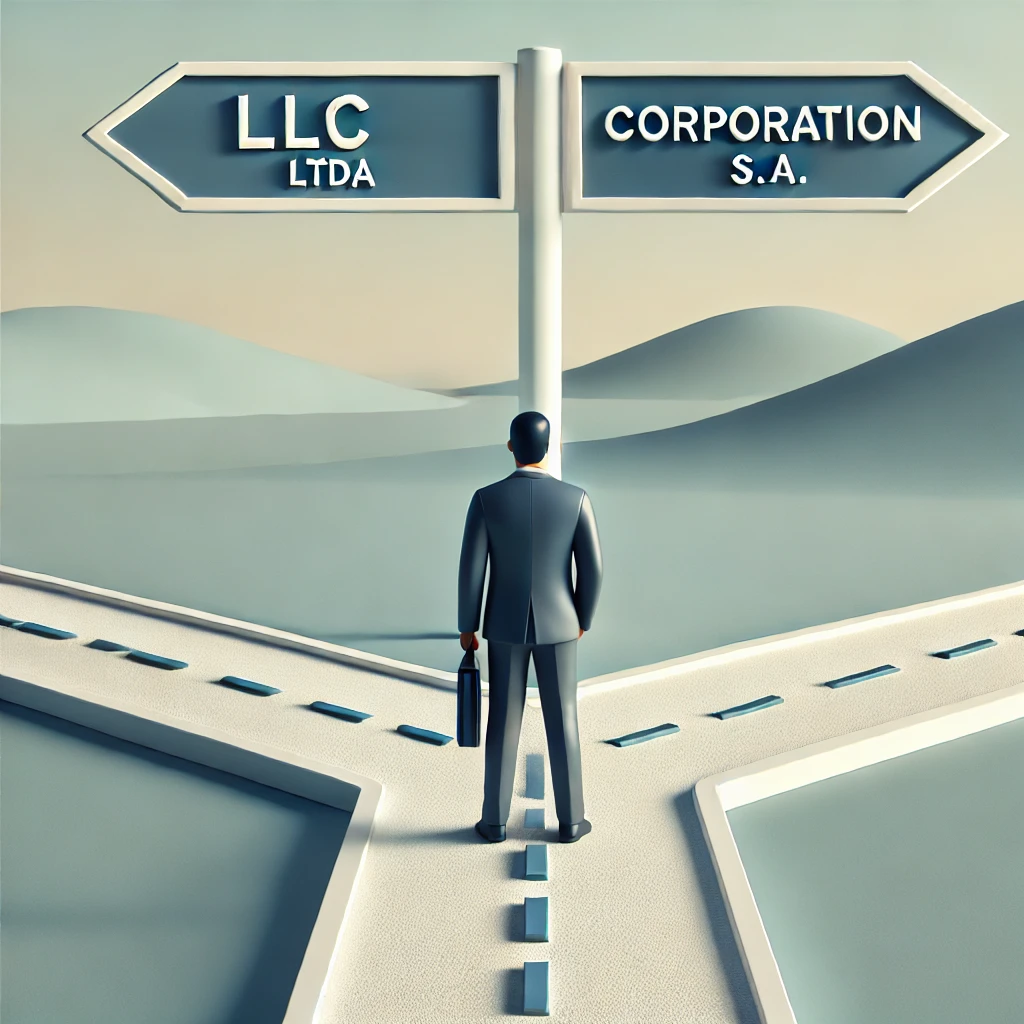Introduction
Choosing the right legal structure is a strategic decision that directly affects a company’s governance, asset protection, and growth potential.
In Brazil, two of the most common corporate models are the Sociedade Limitada (Ltda., or Limited Liability Company) and the Sociedade Anônima (S.A., or Corporation). Each serves different purposes and presents distinct advantages and challenges.
Understanding these differences is essential for entrepreneurs structuring or expanding their businesses, investors assessing risk and opportunity, and board advisors guiding strategic decisions.
This article outlines the key features, strengths, and weaknesses of each model — and offers a practical comparison to help choose the most suitable path.
Limited Liability Company (Ltda.) – The Simplified Model
Purpose
The Sociedade Limitada is designed for companies seeking administrative simplicity, lower maintenance costs, and protection of owners’ personal assets.
It is widely used by small and medium-sized enterprises, but can also suit larger businesses that do not require raising capital through public markets.
Strengths
- Liability limited to the amount of capital contributed by each partner (Article 1.052 of the Brazilian Civil Code).
- Lower maintenance costs and regulatory complexity.
- Flexible governance rules defined in the Articles of Association.
- Suitable for family businesses and closely held companies.
Weaknesses
- Less attractive to institutional investors.
- Limited ability to issue securities or other financial instruments.
- Lower liquidity — ownership quotas are not freely traded in secondary markets.
Global equivalents:
- LLC (United States)
- Ltd. (United Kingdom)
- GmbH (Germany)
- SARL (France)
- S.r.l. (Italy)
- S.L. (Spain)
Corporation (S.A.) – The Scalable Model
Purpose
The Sociedade Anônima structure is designed for businesses aiming to attract large-scale investment, with capital divided into shares.
It is the mandatory format for companies seeking to access capital markets or expand with the participation of institutional investors.
Strengths
- Greater flexibility for shareholder entry and exit.
- Easier access to funding through share or bond issuance.
- Shares may be publicly traded (open corporation) or privately held (closely held).
- Recognized and trusted structure for domestic and international investors.
Weaknesses
- More complex regulation (Brazilian Corporate Law, CVM rules, governance standards).
- Higher maintenance and compliance costs.
- Requires greater transparency and disclosure of information.
Global equivalents:
- Inc. / Corp. (United States)
- PLC (United Kingdom)
- AG (Germany)
- SA (France and Spain)
- SpA (Italy)
- K.K. (Japan)
Strategic Summary
The choice between Ltda. and S.A. depends on the company’s stage of development, growth strategy, and investor profile.
| Situation | Recommended Model | Strategic Focus |
|---|---|---|
| Few partners, family control, focus on simplicity | Ltda. (LLC-type) | Flexibility, cost efficiency, asset protection |
| Growth via capital markets or external investors | S.A. (Corporation-type) | Scalability, governance, investor liquidity |
Why Understanding the Difference Matters
Choosing a corporate structure is not just a legal formality — it defines how a business protects assets, attracts investors, and manages governance.
- For Entrepreneurs:
- Strategic choice between simplicity and scalability.
- Understanding how the structure affects funding, control, and costs.
- Knowing the limits of personal liability and how to safeguard wealth.
- For Investors:
- Evaluating liquidity and exit options (share markets vs. private negotiation).
- Assessing the governance and legal certainty each structure provides.
- Identifying transparency and reporting levels before investing.
- For Board Advisors:
- Designing governance frameworks suited to the company’s legal form.
- Identifying structural risks (e.g., lack of shareholder agreements in LLCs or compliance gaps in corporations).
- Advising on corporate adjustments that align structure, strategy, and growth goals.
Conclusion
The decision between Ltda. and S.A. goes far beyond formality — it shapes how a company relates to investors, organizes its governance, and positions itself for growth.
The Ltda. model offers simplicity and flexibility, ideal for businesses with concentrated ownership and no immediate need for capital markets.
The S.A. model, on the other hand, enhances attractiveness to investors and liquidity but demands higher transparency, cost, and governance rigor.
Regardless of the choice, having a well-drafted shareholder or partnership agreement and specialized legal guidance is essential to ensure alignment, security, and long-term sustainability.
⚖️ Disclaimer
This article provides general information on business structures for educational purposes only.
It does not constitute legal advice. Regulations and requirements vary by country; readers should consult qualified legal professionals before making corporate decisions.

